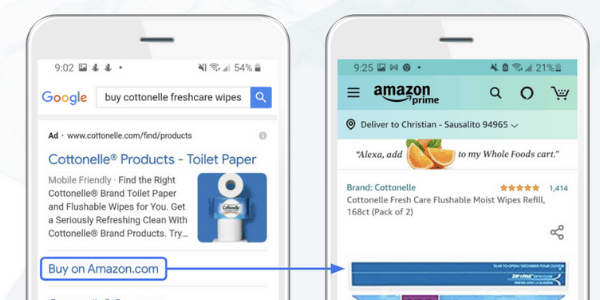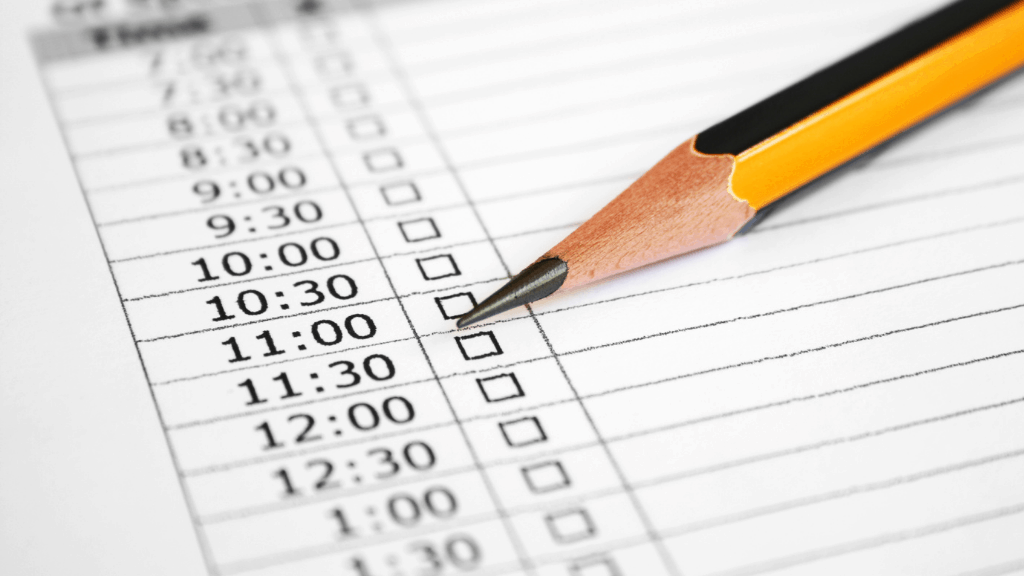
In the television advertising world, “dayparting” is a term that is used to describe the different blocks of time during the day that TV ads can be purchased. While marketers can choose specific times and programs when their commercials air, dayparting gives the networks much-needed flexibility which easies some of the delivery complexities of TV advertising. In turn, networks offer discounted prices to brands willing to set an ad schedule or daypart.
Best Dayparting Strategies
While these dayparts vary somewhat from system to system, the general television advertising dayparts are:
- Morning News: 5:00 a.m. – 9:00 a.m.
- Morning: 9:00 a.m. – 12:00 noon
- Daytime: 12 noon – 3:00 p.m.
- Early Fringe: 3:00 p.m. – 5:00 p.m.
- Early News: 5:00 p.m. – 7:00 p.m.
- Access: 7:00 p.m. – 8:00 p.m.
- Prime: 8:00 p.m. – 11:00 p.m.
- Late News: 11:00 p.m. – 11:30 p.m.
- Late Fringe: 11:30 p.m. – 1:00 a.m.
Automated Marketing Tools for Dayparting: 3 Options to Consider
In online marketing, the term has a completely different meaning.
In digital marketing, “dayparting” is a targeting tactic where practitioners limit when ads are purchased to specific days and times of the day. For example, in Paid Search, you may daypart your campaigns to only run between 11 am and 5 pm—and only on Mondays, Wednesdays, Fridays. This isn’t done by hand, but rather automated marketing tools are used to comply with a dayparting strategy.
Why would a marketer choose to daypart?
Well, the key reason is that the sheer volume of available online ads is staggering. Unless the targeting is very narrow, no brand—not even the richest advertisers on the planet—can afford to buy every ad around the clock to a wide audience. So, in order to zero in on the best times to limit ad serving, marketers use dayparting to only run ads when they provide the most value.
The following are three options digital practitioners might consider before setting their automated marketing tools to daypart their ad programs:
Dayparting Option #1: Conversion rate optimization
One of the most strategic reasons that digital marketers use automated marketing tools to manage dayparting is that they have found a sweet spot in terms of when they get the highest conversion rates.
Take for example a $1,000 Paid Search daily budget with an average cost-per-click of $1. That means this program garners 1,000 clicks per day.
At an average 1% conversion rate, this program would generate 10 conversions per day.
However, what if, in actuality, that 1% average conversion rate was consistently around 5% during a few peak hours and 0.5% the rest of the day? Wouldn’t you want to run as much media during those peak hours?
One company did its own analysis and found this to be true:
At peak hours (between 10 AM-11 AM), site visitors converted 13.9% of the time. Conversely, at the off-peak hour (between 1 AM-2 AM), site visitors converted 2.64% of the time. This drop represents an 81% decrease in conversion rate from peak to trough, making the value of a site visitor to vary drastically depending on when that visitor arrives on a website for these types of services.
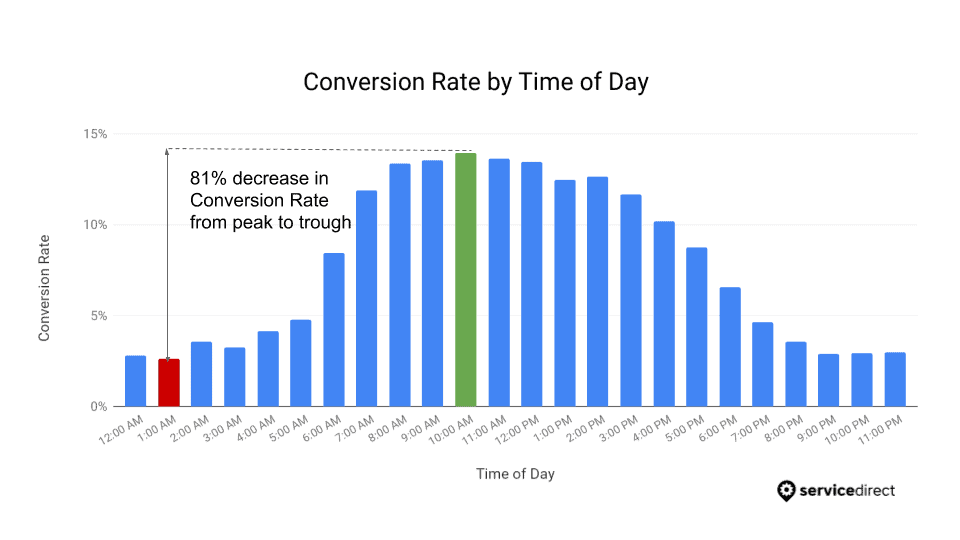
Why would some hours or days have higher conversion rates than others? Maybe the checkout process takes some time so consumers prefer to do so after work? Or maybe a sale must be done during the day but people can only stop during their lunch break? There could be many different reasons. In fact, you may never know the reasons, but just the fact that it happens is a good enough reason to take advantage of it.
Because automated marketing tools can easily be set to pause digital advertising activity during non-peak hours — and activate/”turn on” programs during peak hours — dayparting is a quick and easy way to leverage marketing automation to increase sales.
Dayparting Option #2: To take advantage of low ad costs
While many advertisers leverage their automated marketing tools to manage dayparting, many others do not. That means that their budgets on Paid Search, Social Advertising, and other digital marketing programs are running all day.
The downside to not using dayparting to control costs is that sometimes your daily budgets can run out before the day is over. When that happens, digital publisher ad platforms automatically pause your ads from showing. It’s at this time that savvy marketers can jump in and efficiently buy ads at a lower cost.
To figure out if you can use dayparting for ad costs, a test is needed. Try dayparting so that you’re only running after 9am. Are you still spending your full budget? If not, then you might have to open up those hours to ensure that you are. However, if you can consistently spend your full daily budget after 9am—and your conversions don’t drop—try pushing your dayparting window up to 10am.
Are you noticing any cost savings? If your competitor budgets are running out in the middle of the day, your average Cost-per-Click (CPC) will probably start dropping. This means you can drop your bid too.
As long as you can spend your budget and your conversions don’t fall, you can keep creeping up the clock. Maybe you’ll find that at 4 pm, you can still spend your daily budget, but your average CPC is less than what it is when you run across the full day. That probably means that there are fewer brands competing in the same auctions as you are and that’s keeping the ad costs low.
Using your automated marketing tools, you can zero in on the right time of day to run your ads to take advantage of this potential opportunity.
Dayparting Reason #3: You’re closed…or you’re open
While the Internet is open 24/7, 365 days a year — and on leap days — most businesses are not. While it certainly makes sense to run ads more often during peak conversion times, another dayparting best practice you might consider is when your physical business is closed.

Just because you’re closed doesn’t mean that consumers wouldn’t want to visit and browse your online store. However, if your products (or services) might prompt visitors to call you for questions — and your phones aren’t answered after-hours — then you may want to pull back your ad campaigns.
Conversely, maybe you want to make sure your digital advertising is at full blast when you are closed. After all, when you are open, customers can call and ask all of their questions. But, when you are closed, you might want to push web users to your properties as often as possible?
You will want to perform an analysis of your marketing performance at the hour level to see if you find any patterns before setting your automated marketing tools to shut your ad programs down when you are open or closed.
Skai Paid Search: automated marketing tools for dayparting
Skai Paid Search is the leading global SEM solution for managing, automating, and optimizing paid search marketing campaigns at scale.
Skai’s Paid Search’s ad schedules enable search marketers to daypart in multiple ways. It can even set bids to increase or decrease during certain times of the day. This way you don’t have to just choose on or off, but rather to keep going but at higher or lower bids.
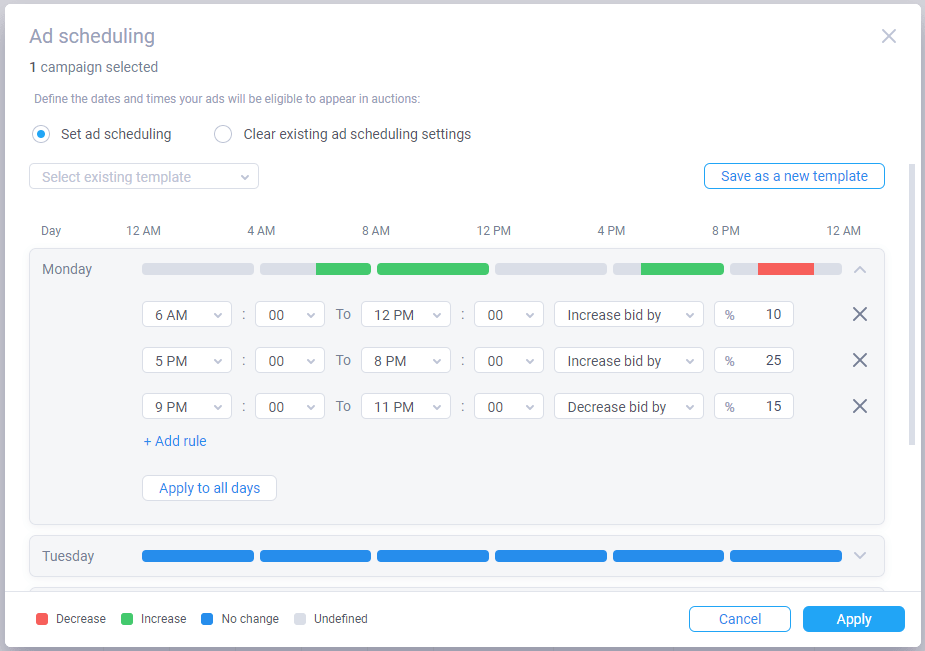
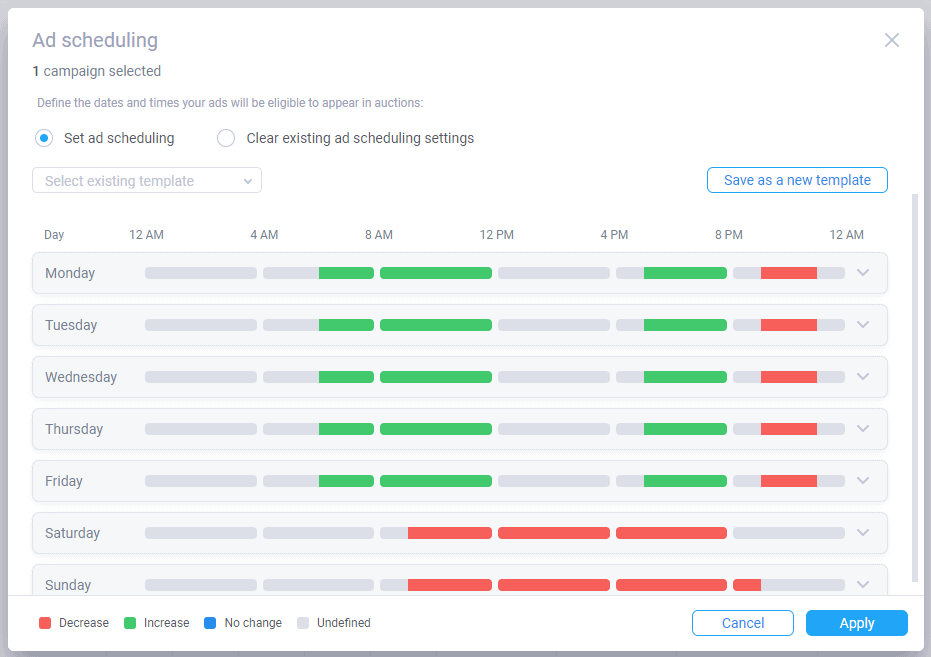
To learn more about Skai’s automated marketing tools, contact us today or set up a brief demo to see these innovative features for yourself.



